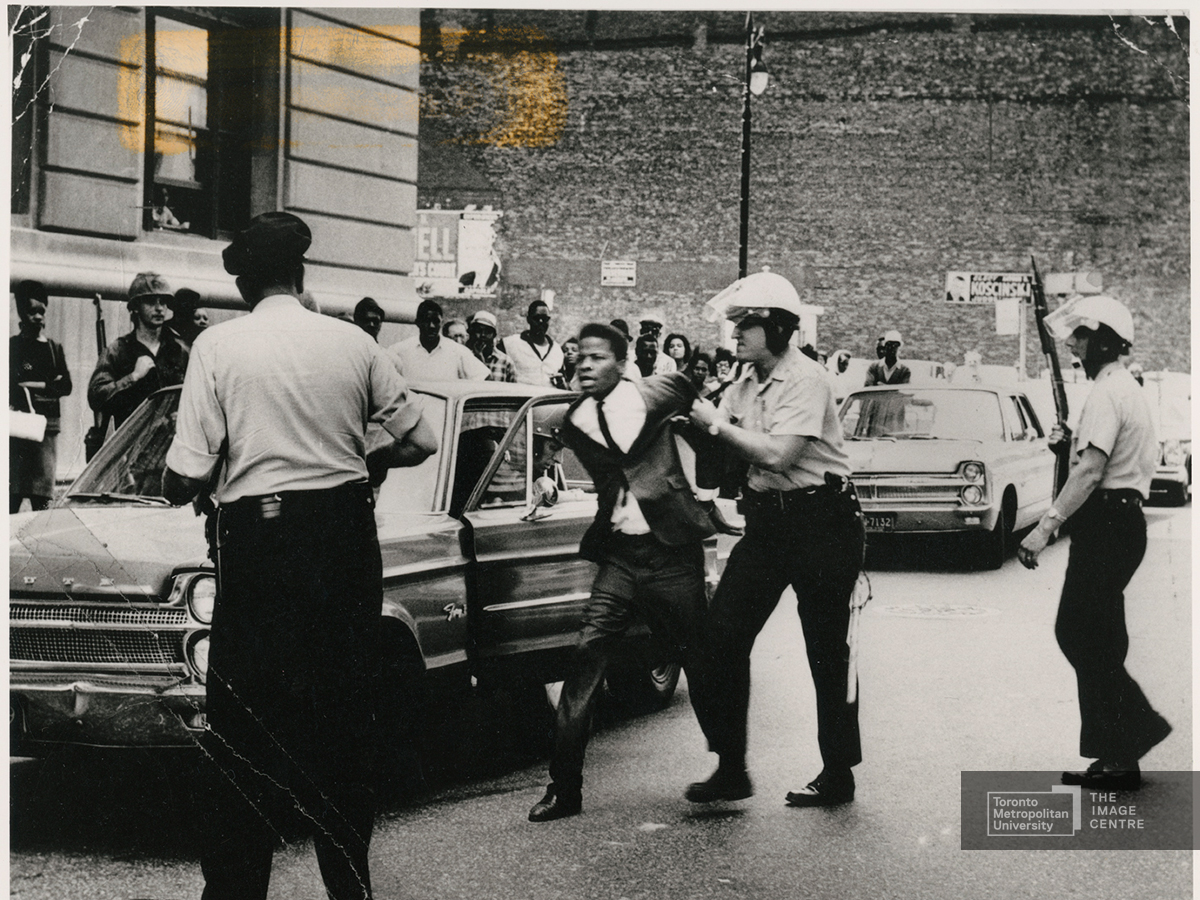Detroit Riots
Critical Race Theory
Critical Race Theory: the criminal justice system defends and maintains the racial structure of society.
Title: Unknown.
Object Type: photograph
Dimensions: 8 x 10 inches; 20.32 x 25.4 cm
Medium: gelatin silver print
Date: 1967
Location: unknown
Accession No: BS.2005.270751
Photographer: unknown
Category: The Black Star Collection, Toronto Metropolitan Universityy. Courtesy of The Image Centre.
Inscriptions: n/a

Museum Label by Krista Babwah, Emily Marra and Hen Povereni, CR8002 : Critical Engagement and Criminological Theories, Winter 2020
Sparked by a police raid in the black ghetto, in July of 1967, the people of Detroit, Michigan experienced the worst race riot in history. With severe racial conflict amongst the entire nation, the Detroit riot of 1967 influenced racial tension between blacks and whites throughout the decades that followed. Those involved in the riot took to the streets, demanding change to the inequalities and divisions they faced. By speaking up and demanding change, these community members demonstrated resistance to the systemic silencing of black people. Their resistance enabled real social change to occur.
The Detroit police officers arresting the black man show efforts to control disorder and race during a period of social unrest. The young black man is unarmed and the police officers surrounding him are heavily equipped with large military grade guns, batons and protective headwear. As one officer retrains the man with his hands behind his back, the other two have their hands on their guns. This highlights the power struggles and racial tensions.
Between 1925 and 1945, the black community experienced police abuse and arrests at extraordinary high rates. The issue here was not to control or diminish crime, but to control racialized people. The police officers over reliance on their guns, created an escalation of violence. Conflict between the Detroit Police Department and the black community was prevalent during this period. This period can be described as one of increased police brutality, when many young black men were killed by white police officers. Detroit’s three major newspapers denied the existence of police brutality, resulting in little to no punishment for the officers involved. It was such incidents that let to the riots of 1967.
The faces in the crowd express concern, but no surprise. The long-lasting conflict between the black and white communities was finally fought against in 1967.
This historic fight for change was the steppingstone to encourage future platforms of social movements against racism. Standing up in resistance shows courage and power. Standing in unity for a shared cause and purpose empowers others to stand up too.
Bibliography
- Ben-Porat, G. (2008). Policing multicultural states: Lessons from the Canadian Model. Policing and Society, 18(4), 411-425.
- Bergesen, A. (1982). Race Riots of 1967: An Analysis of Police Violence in Detroit and Newark. Journal of Black Studies, 12(3), 261–274.
- Crichlow, W. (2014). Weaponization and Prisonization of Toronto’s Black Male Youth. International Journal for Crime, Justice and Social Democracy, 3(3), 113-131.
- Darden, J. T., & Thomas, R. W. (2013). Detroit: Race riots, racial conflicts, and efforts to bridge the racial divide. East Lansing: Michigan State University Press.